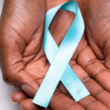Background
Shisha, also known as hookah or waterpipe smoking, is a practice that has been around for centuries, originating in regions like India and the Middle East. It involves inhaling flavored tobacco smoke passed through water in a glass-based pipe. This practice has gained global popularity, especially among young people in social and cultural settings. Despite its appeal, shisha smoking poses significant health risks.
The rapid rise in shisha smoking has led to an increase in shisha lounges and cafes worldwide. However, this trend has also resulted in various misconceptions and myths regarding the safety and health implications of shisha compared to cigarette smoking. Understanding the truths about shisha is crucial as health organizations and governments work to curb tobacco use.
The Legal Context: Uganda’s Tobacco Control Act 2015
In response to growing concerns about tobacco use, including shisha, the Ugandan government enacted the Tobacco Control Act in 2015. This legislation aims to regulate the production, sale, and consumption of tobacco products to safeguard public health. Specifically, the Act bans the importation, manufacture, distribution, and use of shisha within Uganda due to its health-related risks. The Act aligns with global public health strategies to reduce tobacco consumption and mitigate associated health risks.
Shisha vs. Cigarettes: Common Myths and Facts
Despite the widespread belief that shisha is a safer alternative to cigarettes, scientific research indicates otherwise. The following myths and facts clarify the misconceptions about shisha smoking:
Myth 1: Smoking Herbal Shisha is Safer than Regular Shisha
Fact: Many believe that herbal shisha, which lacks nicotine, is a safer option. However, herbal shisha still exposes users to tar and carcinogens, as burning the substance produces harmful chemicals. Thus, the risk of adverse health effects remains.
Myth 2: Adding Milk to the Base Enhances the Experience Safely
Fact: Some shisha users add milk to the water base to create thicker smoke clouds, believing it enhances the experience without harm. In reality, using milk can promote bacterial growth and potentially cause respiratory infections, especially if the hookah is not properly cleaned between uses.
Myth 3: Shisha Flavors Contain No Tobacco, Thus Are Harmless
Fact: The sweet flavors of shisha often mask the presence of tobacco and other harmful substances. Many flavored shisha products still contain nicotine and carcinogens, posing similar health risks as traditional tobacco products.
Myth 4: Shisha Smoke is Less Harmful Because It Doesn’t Burn the Lungs
Fact: Shisha smoke is cooled by water, reducing irritation, but this does not eliminate its harmful components. A typical 60-minute shisha session exposes smokers to much higher levels of smoke compared to a single cigarette, increasing the risk of inhaling toxins and carcinogens.
Myth 5: Water Effectively Filters Out Toxins in Shisha Smoke
Fact: While the water in a shisha pipe does cool the smoke, it does not filter out carcinogens, heavy metals, and other toxic substances. The inhaled smoke still contains harmful chemicals, including tar and carbon monoxide.
Myth 6: Shisha Smoking is Less Addictive Than Cigarette Smoking
Fact: Shisha contains nicotine, the same addictive substance found in cigarettes. Regular shisha smokers can develop nicotine dependence, leading to increased frequency of use and potential addiction.
Health Implications of Shisha Smoking
The health risks associated with shisha smoking are significant and well-documented. According to the British Heart Foundation, shisha smoke contains harmful chemicals similar to those found in cigarettes, such as nicotine, tar, carbon monoxide, and heavy metals like arsenic and lead. These substances contribute to heart and circulatory diseases by damaging artery walls and increasing the risk of heart attacks and strokes.
Afsaneh Khetrapal, a Biomedical Scientist from Warwick University, in her article “Is Smoking Shisha Harmful?” highlights the following harmful effects of shisha smoking:
Cancer
Shisha smokers typically absorb higher concentrations of toxic smoke than cigarette smokers due to the characteristics of shisha smoking, such as the frequency of puffing and depth of inhalation. During a typical hour-long shisha session, a user may inhale up to 200 times the volume of smoke inhaled from a cigarette. Although the water in a shisha pipe acts as a filter, it is not effective in removing high levels of toxic products, such as carbon monoxide, heavy metals, and carcinogens present in the smoke .
Cardiovascular Diseases
The toxins from shisha smoke enter the bloodstream and contribute to atherosclerosis, hardening, and narrowing arteries. The smoke damages the lining of the arteries, leading to the accumulation of fatty deposits (atheroma), which narrows the arteries. These changes can cause various cardiovascular complications, such as angina, congestive heart failure, heart attacks, or strokes.
Shisha smoking delivers almost the same amount of nicotine as cigarettes, resulting in nicotine addiction. Nicotine also stimulates adrenaline production, raising blood pressure, making the heart work harder, and increasing the risk of heart attack or stroke .
Additionally, the National Library of Medicine reports that the harmful health effects of shisha smoking are primarily due to the presence of carbon monoxide, polycyclic aromatic hydrocarbons, volatile aldehydes, nitric oxide, nicotine, phenolic compounds, tar, ammonia, heavy metals, and particulate matter in the smoke generated. The carbon monoxide in the smoke competes with oxygen in the blood to form carboxyhemoglobin, leading to cell hypoxia and impaired cell respiration.
Shisha smoking has also been linked to various cancers, including lung, oral, esophageal, stomach, bladder, colorectal, and nasopharyngeal cancers. The amount of harmful substances inhaled during a single shisha session can be multiple times higher than that of a single cigarette, increasing the risk of carcinogenesis.
Moreover, shisha smoking can lead to oxidative stress, genotoxic effects, and carbon monoxide poisoning. Sharing the shisha’s mouthpiece poses a high risk of transmitting communicable diseases, including hepatitis A and tuberculosis.
Verdict: The Reality of Shisha Use
Despite the allure and social appeal of shisha, it poses significant health risks similar to, if not greater than, cigarette smoking. The belief that shisha is a safer alternative is a dangerous misconception that can lead to severe health consequences. Shisha users, particularly young people, must be informed about these risks and make educated decisions about their health.
While cultural and social contexts play a role in the popularity of shisha, it is crucial to prioritize public health and dispel myths that contribute to its growing use. Governments and health organizations should continue to implement measures that raise awareness and reduce tobacco consumption in all forms.
Ultimately, understanding the truth about shisha is vital in combating the tobacco epidemic and protecting the health of individuals and communities worldwide.









